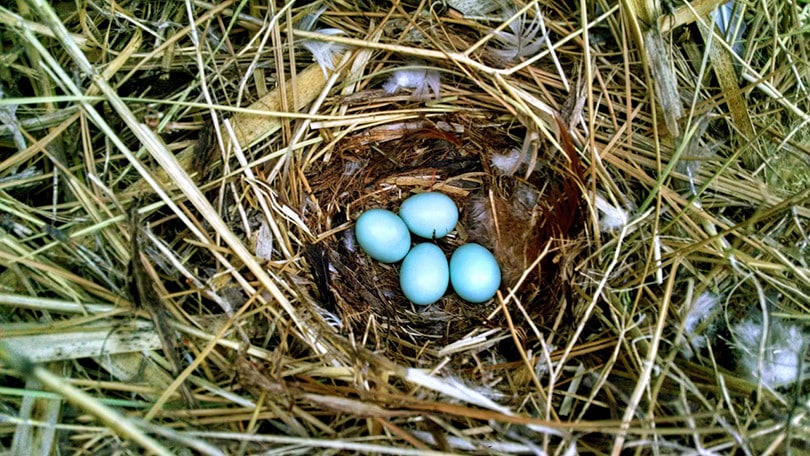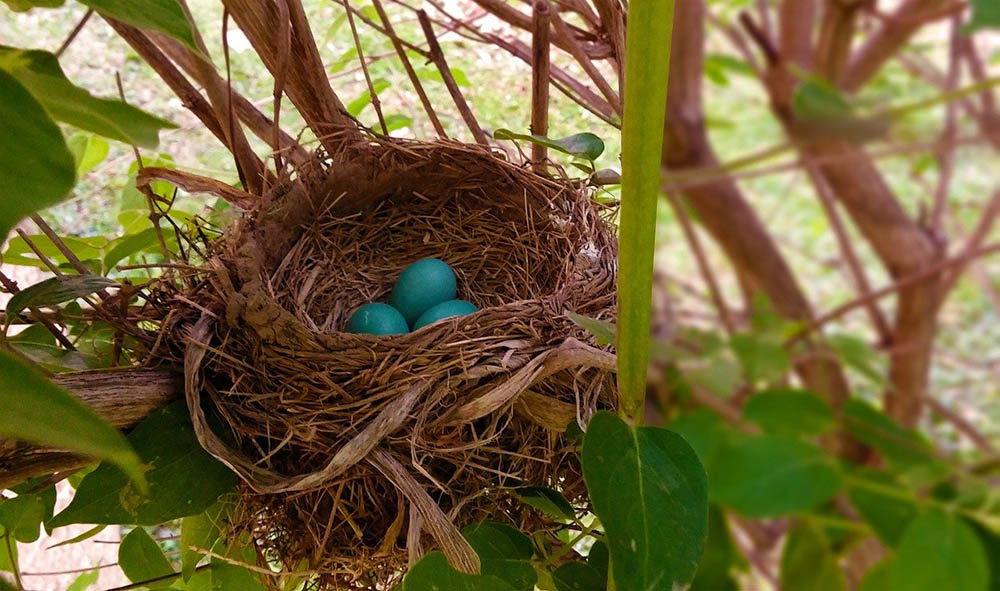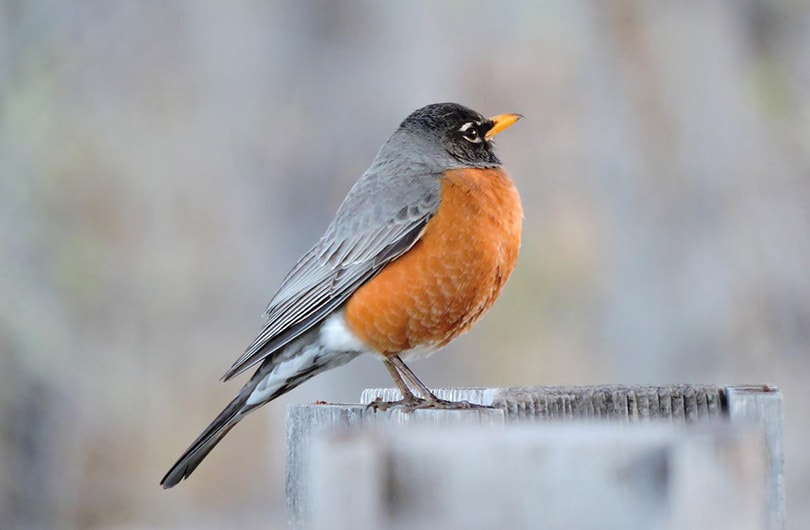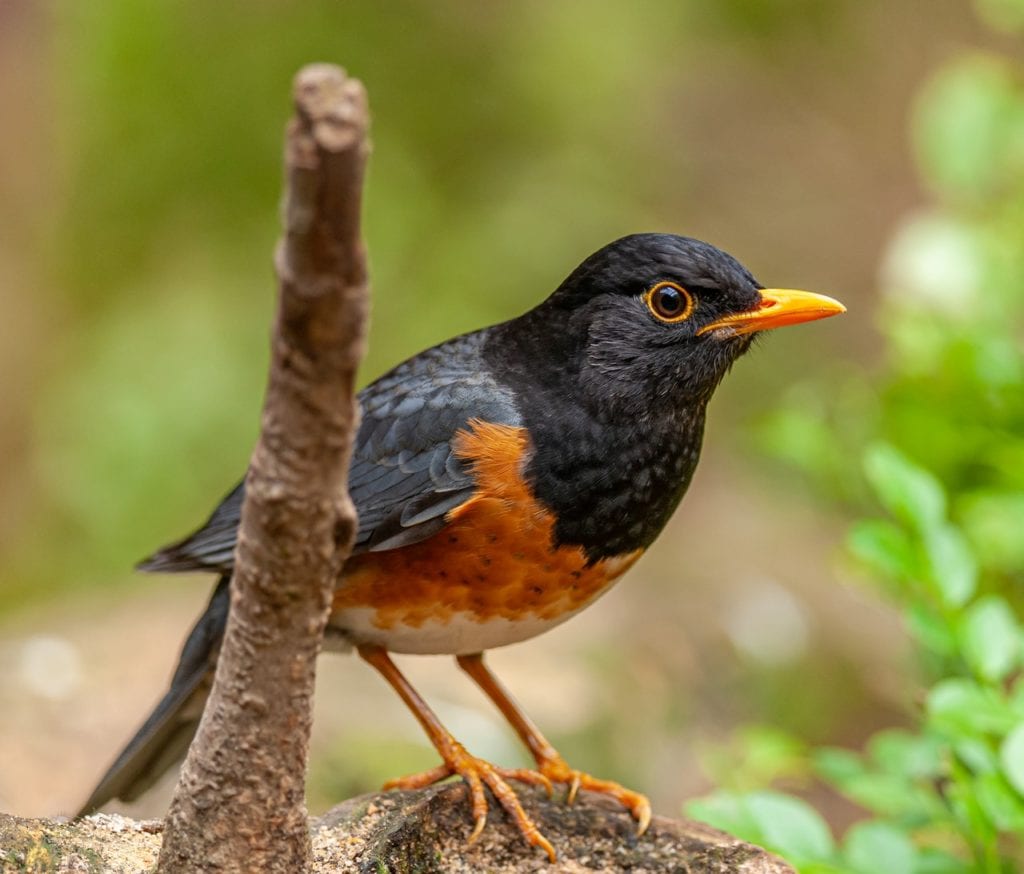Why Are Robin Eggs Blue? The Interesting Answer!
Last Updated on

American robins are a common sight on lawns all over the world. These small birds can usually be identified by their brownish-orange bellies and dark gray back feathers–and by their quick, hopping movements.
On any given day, you may see a robin hanging outside in your backyard looking for food. You may also hear them singing in the distance. In fact, many people associate spring’s arrival with its cheerful song.
Another notable attribute of these birds is their bright blue eggs. But what causes robins to lay blue eggs? Robin eggs are blue because of an antioxidant and bile pigment called biliverdin, which the female deposits on the egg as she lays it.

Why Are Robin Eggs Blue?
The blue color of robin eggs is due to biliverdin, an antioxidant and bile pigment that the birds produce when they’re pregnant. This pigment is actually deposited on the eggshell by the female when she lays the eggs. Evidence suggests that a higher level of biliverdin indicates a healthier female, which often means brighter eggs (think “Tiffany blue” or “Sky blue”).
You may be interested to know that robins aren’t our only ornithological friends that can lay blue-colored eggs. Other bird species including Blackbirds, Common Starlings, Magpies, Song Thrush, and Dunnocks also lay blue eggs.

Other Characteristics of Robin Eggs
Eggshells with more intense blue hues are better protected from UV radiation and light. On the same note, bird eggs with more intense colors, in general, tend to absorb more light and heat up which can make them more dangerous in brighter environments due to predation.
In moderate light, robins are more likely to lay darker eggs to keep them safe. However, egg heating can lead to lighter eggs in brighter nests. Camouflage from predators remains the most important factor in the development of dull or mottled egg colors in robins.
On average, the American robin usually lays between 3 and 5 eggs per brood, and about 2 to 3 broods per season. The eggs may vary in size but are typically between 1.1 to 1.3 inches in length and .8 inches in width.

American Robin Habitat
Robins are common in the United States because they can forage, nest, and live in nearly any habitat, whether natural or one created specifically for them. The robin’s natural habitat is primarily open woodlands and forests. Robins prefer trees to nest, but they will build their nests in buildings and under porch roofs if they need to.
They can often be seen on grassy fields and lawns, cocking their heads as if searching for earthworm prey. However, these birds don’t use their hearing to locate the worms, but rather their keen sense of sight.
The robin has side-fixed eyes that provide them with a wide visual range, which is useful for keeping an eye on any of its many predators. However, head bobbing and head cocking are required to fix one of these eyes to the ground directly in front of their beaks.

Typical Diet for Robins
Robins eat, almost equally, both animal and plant food sources. They really aren’t the choosiest bird variety, and they’ll always keep food in their nests. Also, robins will usually gravitate toward small fruit, especially berries. They also love earthworms, grasshoppers, caterpillars, small spiders, and grubs.
These birds, like many, are a bit opportunistic, so the specific foods that a robin eats will depend on the availability of food in their area, season, and possibly his or her meal habits.
Robin Migration Habits
Robins have a varied response when it comes to migration. Some robins will migrate toward warmer climates in the south in the winter months, starting in early October. However, some robins will stay in the same location all year round if the temperature is moderate and they have a food source that is available. The availability of a promising food source–it’s usually the main determinant and whether they decide to move to a new location.

How to Attract Robins to a Backyard
It doesn’t take much to get the attention of these small birds. If you live in a state where they’re common, you can stock a tray feeder or bird table with nuts or seeds. Robins love berries, so shrubs with berries in the winter and late autumn are a great natural food source for them.
Mealworms just happen to be their favorite food and can be used to get them to eat from your hand in winter when it is more difficult for them to find nearby food sources. Fat balls and suet are also very popular. Lastly, try keeping clean water in a nearby tray to attract robins to your yard.

Wrapping Things Up
Robins lay blue eggs as a result of an antioxidant and pigment that the female produces while she’s pregnant. There are also other bird species that produce blue-colored eggs as well. The shade of the eggs will often depend on the habitat in which they live.
Featured Image Credit: onwhite84, Pixabay
About the Author Robert Sparks
Robert’s obsession with all things optical started early in life, when his optician father would bring home prototypes for Robert to play with. Nowadays, Robert is dedicated to helping others find the right optics for their needs. His hobbies include astronomy, astrophysics, and model building. Originally from Newark, NJ, he resides in Santa Fe, New Mexico, where the nighttime skies are filled with glittering stars.
Related Articles:
10 Types of Hummingbirds in Arkansas (With Pictures)
8 Types of Hummingbirds in Nebraska (With Pictures)
5 Types of Hummingbirds in Idaho (With Pictures)
3 Types of Hummingbirds in Mississippi (With Pictures)
8 Types of Hummingbirds in Kansas (With Pictures)
5 Types of Hummingbirds in West Virginia (With Pictures)
5 Types of Hummingbirds in Ohio (With Pictures)
Where Do Nuthatches Nest? Nuthatch Nesting Habits Explained
